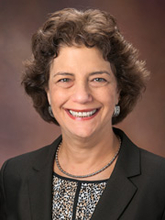CHOP Researchers Find Gaps in Knowledge, Communication about ASD Treatment Choices
Parents of young children diagnosed with autism spectrum disorder (ASD) may experience significant difficulties in discussing treatment options with the child’s pediatrician, according to new research. Among the barriers are problems with communication, physicians’ lack of knowledge about specific ASD treatments and community resources, and uncertainty about the pediatrician’s role in making treatment recommendations for a child with ASD.
Many parents in the study reported that they did not discuss the choice of any treatment options with their pediatricians, and others said their physicians provided only general recommendations or referrals. The study team suggests that tools such as decision aids and practice guidelines may help foster more effective communication between families and pediatricians.

“We investigated shared decision making — an interactive process in which patient families and physicians work together to arrive at a treatment plan,” said study leader Susan E. Levy, MD, MPH, a developmental and behavioral pediatrician in the Center for Autism Research and the Division of Developmental and Behavioral Pediatrics at The Children’s Hospital of Philadelphia (CHOP).
The study appears online in Academic Pediatrics.
Shared decision making (SDM) has been studied over recent decades as a method for improving provider-patient communication and partnership, with improvements seen in satisfaction, adherence and health outcomes. “Although there are more studies in adult health settings, SDM concerns continue to expand into pediatric practice,” said study co-author Alexander G. Fiks, MD, MSCE, a pediatrician at CHOP’s PolicyLab and the Center for Pediatric Clinical Effectiveness who has investigated how to implement SDM approaches for children with special needs.
The current single-center study used a qualitative approach, with in-person or telephone interviews of 20 pediatricians and 20 parents of young children with a diagnosis of ASD, ages 2 to 5 years. All participating clinicians were from the CHOP pediatric network, drawn in equal numbers from urban and suburban offices. Families came from Philadelphia and surrounding suburbs.
The study team identified three principal themes:
- Both parents and physicians reported knowledge gaps about ASD treatments and community resources, and described ambiguity about the pediatrician’s role in ASD care;
- A lack of communication existed between parents and pediatricians about treatment choices; and
- The use of complementary and alternative medicine (CAM) treatments created conflict between pediatricians and parents
The researchers suggest that as primary care pediatricians encounter more children with ASD in their practice, they may benefit from the use of tools available through the American Academy of Pediatrics, such as the Autism Toolkit and clinical practice guidelines. Such tools have helped support pediatricians in managing children with attention deficit hyperactivity disorder (ADHD) in the primary care setting.
However, noted Fiks, there are significant differences between the disorders, including more medication options for managing core symptoms of ADHD than for ASD. Referring to ASD management, one pediatrician told the interviewer, “We in general are not so much an expert on it so it is harder to just prescribe things, and it turns out we really can’t do it anyway.”
Many parents sought treatment options outside the medical community, from school staff or various therapists. As has been found in the literature, many parents pursued CAM treatments. Parents reported they did not discuss these treatments with their pediatrician due to the pediatrician’s lack of knowledge or discomfort with the topic. One parent said, “Look, I left the last guy because he wouldn’t listen to me. At this point this is what my son is on [a special diet].”If pediatricians are uncomfortable in discussing unproven CAM therapies, such as specialized diets, supplements or vitamin shots, they miss an opportunity to discuss benefits and risks.
Given the study’s findings of knowledge barriers and a lack of engagement in treatment decisions, the authors suggest some specific measures for primary care practices: using care coordinators, ASD care plans, creating summaries of outside resources, and providing families with logs to monitor progress.
More fundamentally, the authors conclude, shared decision-making will involve greater recognition by both providers and parents that partnering in care for children with ASD falls within the scope of pediatricians’ jobs and is in the families’ best interest. “Much work remains to be done to improve this process in caring for children with ASD,” said Levy.
The Center for Autism Research at CHOP supported this study. In addition to their CHOP positions, Levy and Fiks are on the faculty of the Perelman School of Medicine at the University of Pennsylvania.
“Shared Decision Making and Treatment Decisions for Young Children with Autism Spectrum Disorder,” Academic Pediatrics, published online April 27, 2016.
from http://www.chop.edu/news/sharing-treatment-decisions-autism-may-challen…
see also:
- https://www.sciencedaily.com/releases/2016/06/160620141313.htm
- http://www.prnewswire.com/news-releases/sharing-treatment-decisions-cha…
- http://www.sciencenewsline.com/summary/2016062023210011.html